How to install the cuid CO Detection SensorUpdated 8 months ago
Product introduction
This product is a smart carbon monoxide sensor, it adopts Z-Wave wireless network technology with very low power consumption. It is used to detect carbon monoxide. The sensor adopts high-performance electrochemical sensor, supports sound and flash alarm. It has high stability and super low power consumption.
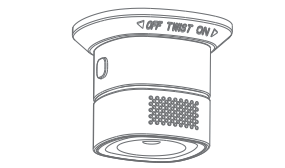
Technical data
Strength: DC 3V
Battery: CR123A/CR17335 lithium battery (HCB/EVE)
Sensor life max. 10 years
Temperature-10°C+40°C
Humidity 0%-95%RH without condensation
Sound level 285dB at 3m
Alarm output Visual and audible indication.
Warm-up period Approx. 100 seconds
Mounting Method: Wall Mount
Battery life 3-5 years
CHARACTERISTICS
Silent mode: silences an unwanted alarm
Advanced Electrochemical CO Sensor Technology
Digital temperature compensation technology
Low battery warning
Anti-RF interference
IMPORTANT SAFETY INFORMATION
This carbon monoxide (CO) sensor is a sophisticated device that has been carefully designed and tested to detect CO buildup in residential environments.
CO cannot be seen, smelled or tasted and can be fatal. The buildup of CO in the blood is called the carboxyhemoglobin level and interferes with the body's ability to supply itself with oxygen. Depending on the concentration, carbon monoxide can kill in minutes.
The most common sources of CO are malfunction or misuse of gas appliances used for heating and cooking, vehicle engines, electric generators, blocked chimneys or flues, fuel-burning portable heaters, fireplaces, fuel-powered tools, and operating a grill in an enclosed space. .
Signs of CO poisoning include flu-like symptoms, but without fever. Other symptoms include dizziness, fatigue, weakness, headache, nausea, vomiting, drowsiness, and confusion. Everyone is susceptible to the danger of CO, but young children, pregnant women, older people, and people with heart or respiratory problems may experience symptoms sooner. Every year, a qualified technician should inspect and clean your heating system, vents, chimneys and flues.
Hazards, warnings, and cautions alert you to important operating instructions or potentially dangerous situations. Pay special attention to these elements.
THIS IS NOT A SMOKE ALARM
This CO alarm is designed to detect carbon monoxide from ANY combustion source, but is NOT designed to detect smoke, fire or any other gases.
This CO alarm is approved for use in single-family residences. It is NOT designed for marine or recreational vehicle use.
CAUTION!
This CO alarm will only indicate the presence of carbon monoxide gas at the sensor. Carbon monoxide gas may be present in other areas.
WARNING!
Always check your home for potential problems after any alarm. Failure to do so may result in injury or death.
NEVER ignore any alarm. If there is any doubt about the cause of an alarm, it should be assumed that the alarm is due to a dangerous buildup of high levels of carbon monoxide and the home should be evacuated.
Test this carbon monoxide sensor once a week.
HOW TO INSTALL THE CO SENSOR
BATTERY INSTALLATION AND REPLACEMENT
To install or replace the batteries in this CO sensor, follow these steps:
• Rotate the sensor counterclockwise from the mounting bracket.
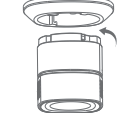
• If you replace the battery, remove the old battery and dispose of it properly as recommended by the battery manufacturer. If you install a new battery, see the polarity illustration in the battery compartment. When the battery is installed correctly, the alarm horn beeps.

•
Screw the alarm into the bracket.
IMPORTANT: Constant exposure to high or low humidity may reduce battery life. After installing or changing the battery, test your sensor using the test button.
MOUNTING
This CO sensor is suitable for wall mounting only; To mount it, follow these steps:
• Draw a 5 cm long horizontal line in the area of the walls where this CO sensor is intended to be located.
• Locate the mounting bracket in the chosen position. Align the two longest mounting slots with the line. Draw a mark in the center of each slot.
mounting slot
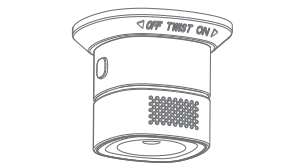
• Drill the holes at the markings with a 5 mm (3/16 inch) drill.
Note: Keep the CO sensors away from plaster dust when drilling holes.
• Insert the anchor plugs and screw the mounting bracket to the chosen position. DO NOT OVERTIGHTEN THE SCREWS, this will distort the mounting bracket.
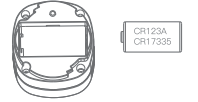
•Hook the CO sensor onto the mounting bracket.
After securing the mounting bracket to the wall, remove the battery insulating strip to power on the sensor and rotate the sensor clockwise inside the bracket.
Attention: Make sure the CO alarm LED indicator faces downward after assembly.
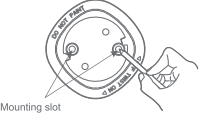
MAINTENANCE
To keep your sensor in good working order, you should follow these steps:
Test the sensor once a month by pressing the test button.
Vacuum the sensor cover once a month to remove accumulated dust.
Never use detergents or solvents to clean the sensor. Chemicals can permanently damage or temporarily contaminate the sensor.
Avoid spraying air fresheners, hair sprays, paint, or other aerosols near the sensor.
Do not paint the sensor: paint will seal the vents and interfere with proper functioning of the sensor.
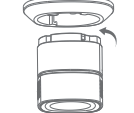
WHAT TO DO IF THE CO SENSOR ALARM SOUNDS
Call the emergency services (fire department).
Evacuate the property. Do not re-enter the premises until emergency services have arrived.
If problems are identified with the sensors, call the technical care area so that a technician can check the sensors.
Do not press the test button as it cannot cancel the alarm.
HOW YOUR CO SENSOR WORKS
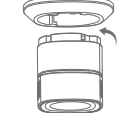
Where to locate the CO sensor
A CO sensor should be located centrally outside each separate sleeping area, in the immediate vicinity of the bedrooms. For added protection, install additional CO sensors in each separate bedroom and on each level of your home.
If your bedroom hallway is longer than 40 feet (12 meters), install a CO sensor at BOTH ends of the hallway.
In a single level home:
• Install at least one CO sensor near or within each separate sleeping area.
• For added protection, install an additional CO sensor at least 20 feet (6 meters) away from the boiler or fuel-burning heat source.
In a multi-level house:
• Install at least one CO sensor near or within each separate sleeping area.
• For added protection, install at least one CO sensor on each level of the home. If you have a basement, install a CO sensor at the top of the basement stairs.
• For added protection, install an additional CO sensor at least 20 feet (6 meters) away from the furnace or fuel-burning heat source.
Installation drawing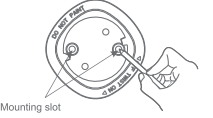
You have the right to decide whether to accept or reject cookies. You can exercise your cookie rights by setting your preferences in the Cookie Consent Manager. The Cookie Consent Manager allows you to select which categories of cookies you accept or reject. Essential cookies cannot be refused as they are strictly necessary to provide services to you.
The Cookie Consent Manager is located in the notification banner and on our website. If you choose to decline cookies, you may still use our website, although your access to some features and areas of our website may be restricted. You can also set or modify your web browser controls to accept or reject cookies.
The specific types of first-party and third-party cookies served through our website and the purposes they serve are described in the table below (please note that the specific cookies served may vary depending on the particular Online Properties you visit):
Analytics and Personalization Cookies: